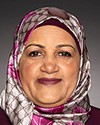That's a great question, and I really am glad you're asking it.
I would say two things. The first is that awareness is a problem. While we identify and are working on these areas—and I'm not just talking about indigenous populations; I'm talking about non-indigenous populations as well—there is awareness that these are some things we need to focus on.
The second point is that we've been really investing a lot in recovery and rebuilding. Now we're turning our attention to building back better, for instance, and making sure we're investing in awareness. For example, FireSmart has a component teaching people to be aware that they should not put their wood close to their house. It's simple things like that.
Knowing about those risks is helping people to adapt and adopt behaviours to reduce potential risks down the road, but it's also helping to mitigate the costs of recovery. That's why, working on the emergency management strategy with all the provinces and territories, we're really focused on.... You mentioned the four pillars. We're focusing on the prevention and mitigation pillars. That's where we're going to get return on the investment, I believe.



